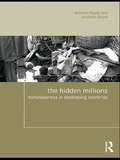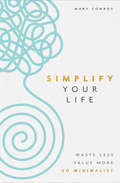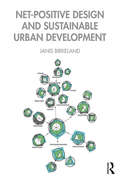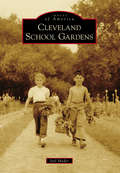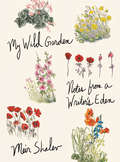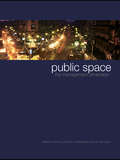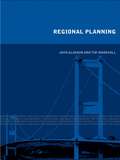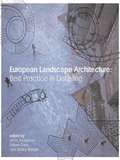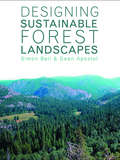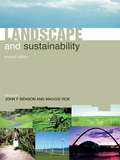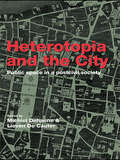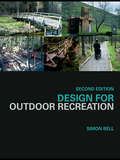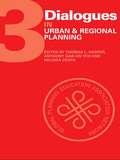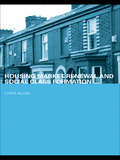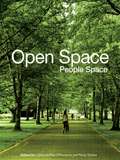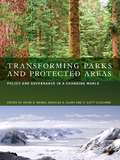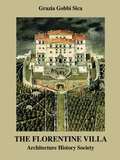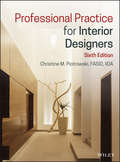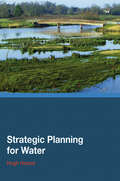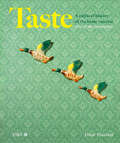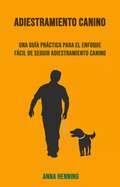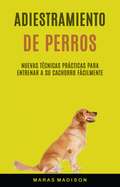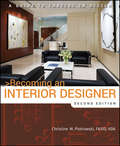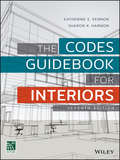- Table View
- List View
The Hidden Millions: Homelessness in Developing Countries (Housing and Society Series)
by Graham Tipple Suzanne SpeakThis book explores the extent, causes and characteristics of homelessness in developing countries. Bringing together a major review of literature and empirical case studies, it is invaluable for those studying, researching or working in housing, homelessness, social policy or urban poverty. Drawing on local research in nine countries in the global south, this book offers an insight into the lives of homeless people, public perceptions of homelessness, and the policies and interventions which might variously increase or reduce homelessness. Exploring the human context as well as policy and planning, it will challenge preconceptions.
Simplify Your Life: Waste Less, Value More, Go Minimalist
by Mary ConroyMinimalism is for rich people who live in big, empty, white homes, right? Wrong. Minimalism can be a beautiful, enriching and life-transforming practice that, at its core, is all about re-establishing what holds value in your life and letting go of what does not. It's not about having your groceries displayed in glass jars or having chic, Scandinavian furniture - it's a way of life that allows us to strip away the clutter that stands in the way of us achieving our goals. Simplify Your Life is about exactly that: bringing simplicity back into your life, and with it, joy in the everyday. Dispelling the myths that minimalism is for either hardcore environmentalists or the privileged few, this book shows how minimalism is more relevant and necessary than ever, not least because it's the most accessible way to achieve a state of contentment in all aspects of life. Minimalism is for you if you want to: • stop mindlessly scrolling and start living with intention and purpose • spend more time on the things and people you love and less on what you "have to be/do" • take control of your finances and stop mindless spending • learn more about conscious consumption and reducing your waste • experience freedom and pride in your home instead of feeling trapped by your stuffAlthough minimalism is ostensibly about taking things away from our cluttered lives, it is really about adding richness, color, and meaning to our lives. It's about identifying the aspects of our life that we truly love and that nourish us. It's about trusting ourselves and leading the life we always wanted.
Net-Positive Design and Sustainable Urban Development
by Janis Birkeland‘Sustainable’ urban planning, policy and design professes to solve sustainability problems, but often depletes and degrades ever more resources and ecosystems and concentrates wealth and concretize social disparities. Positive Development theory holds that development could create more net ecological and social gains than no construction at all. It explains how existing conceptual, physical and institutional structures are inherently biased against the preservation and expansion of social and natural life-support systems, and proposes explicit reforms to planning, design and decision making that would enable development to increase future options and social and natural life-support systems – in absolute terms. Net-Positive Design and Sustainable Urban Development is aimed at students, academics, professionals and sustainability advocates who wonder why existing approaches have been ineffective. It explains how to reform the anti-ecological biases in our current frameworks of environmental governance, planning, decision making and design – and suggests how to make these changes. Cities can increase both the ‘public estate’ (reduce social stratification, inequity and other causes of conflict, increase environmental quality, wellbeing and access to basic needs, etc.); and the ‘ecological base’ (sequester more carbon and produce more energy than used during construction and operation, increase ecological space to support ecological carrying capacity, ecosystem functions and services, restore the bioregions and wilderness, etc.). No small task, this new book provides academic theory and professional tools for saving the planet, including a free computer app for net-positive design.
Cleveland School Gardens (Images of America)
by Joel MaderThe Cleveland Public School's tract garden program was one of the most successful and innovative programs of the school system. The organization and beauty of the gardens attracted horticulture educators from all over the United States, South America, and as far away as Japan. From its humble beginnings in 1904 as a project to beautify vacant lots in Cleveland, it grew into an educational tool that taught thousands of children the respect for nature and its bounty. At the tract gardens' height, the amount of land under cultivation in the middle of the Cleveland urban landscape approached 100 acres. By 1970, there were 27 horticultural centers servicing all Cleveland schools. Centers were located next to schools, in housing estates, at fairgrounds, at a home for the aged, and on museum property. A few of the centers are now neighborhood gardens. The photographs in Cleveland School Gardens show that the Cleveland Public Schools knew the importance of being "green" 100 years before it was politically fashionable.
My Wild Garden: Notes from a Writer's Eden
by Meir ShalevA colorfully illustrated round of the season in the garden of the best-selling novelist, memoirist, and champion putterer with a wheelbarrow On the perimeter of Israel&’s Jezreel Valley, with the Carmel mountains rising up in the west, Meir Shalev has a beloved garden, &“neither neatly organized nor well kept,&” as he cheerfully explains. Often covered in mud and scrapes, Shalev cultivates both nomadic plants and &“house dwellers,&” using his own quirky techniques. He extolls the virtues of the lemon tree, rescues a precious variety of purple snapdragon from the Jerusalem–Tel Aviv highway, and does battle with a saboteur mole rat. He even gives us his superior private recipe for curing olives. Informed by Shalev&’s literary sensibility, his sometime riotous humor, and his deep curiosity about the land, My Wild Garden abounds with appreciation for the joy of living, quite literally, on Earth. Our borrowed time on any particular patch of it is enhanced, the author reminds us, by our honest, respectful dealings with all manner of beings who inhabit it with us.
Public Space: The Management Dimension
by Matthew Carmona Claudio De Magalhães Leo HammondIn both the UK and the US there is a sense of dissatisfaction and pessimism about the state of urban environments, particularly with the quality of everyday public spaces. Explanations for this have emphasized the poor quality of design that characterizes many new public spaces; spaces that are dominated by parking, roads infrastructure, introspective buildings, a lack of enclosure and a poor sense of place, and which in different ways for different groups are too often exclusionary. Yet many well designed public spaces have also experienced decline and neglect, as the services and activities upon which the continuing quality of those spaces have been subject to the same constraints and pressures for change as public services in general. These issues touch upon the daily management of public space, that is, the coordination of the many different activities that constantly define and redefine the characteristics and quality of public space. This book draws on three empirical projects to examine the questions of public space management on an international stage. They are set within a context of theoretical debates about public space, its history, contemporary patterns of use and changing nature in western society, and about the new management approaches that are increasingly being adopted.
Regional Planning: Concepts, Theory And Practice (Natural and Built Environment Series)
by John Glasson Tim MarshallRegional Planning provides a comprehensive introduction to the concepts and theory of regional planning in the UK. Drawing on examples from throughout the UK, it provides students and practitioners with a descriptive and analytical foundation for understanding this rapidly changing area of planning. The book includes four main sections covering: the context and history of regional planning theoretical approaches evolving practice future prospects. New questions and methods of theorizing are explored and new connections made with contemporary debates in geography, political science and planning theory. The elements of critical analysis allow both practitioners and more advanced students to reflect upon their activities in a contemporary context. Regional Planning is the essential, up-to-date text for students interested in all aspects of this increasingly influential subject.
European Landscape Architecture: Best Practice in Detailing
by Ian H. Thompson Torben Dam Jens Balsby NielsonDrawing together case studies from all over Europe, this text explores the relationship between the overall idea of the landscape architecture for a site and the design of details. Examining concept sketches and design development drawings in relation to the details of the design, the book offers a more profound understanding of decision making through all stages of the design process. The book includes the study of the choice of materials and techniques of construction, and explores the cultural and symbolic significance of such choices, as well as questions of environmental sustainability. With projects analyzed and evaluated here that have won international acclaim, or have been awarded national prizes, European Landscape Architecture is a core book in the study and understanding of the subject.
Designing Sustainable Forest Landscapes
by Simon Bell Dean ApostolDesigning Sustainable Forest Landscapes is a definitive guide to the design and management of forest landscapes, covering the theory and principles of forest design as well as providing practical guidance on methods and tools. Including a variety of international case studies the book focuses on ecosystem regeneration, the management of natural forests and the management of plantation forests. Using visualisation techniques, design processes and evaluation techniques it looks at promoting landscapes which are designed to optimise the balance between human intervention and natural evolution. A comprehensive, practical and accessible book, Designing Sustainable Forest Landscapes is essential reading for all those involved in forestry and landscape professions.
Landscape and Sustainability
by John F Benson Maggie RoeThis unique book addresses the issue of sustainability from the point of view of landscape architecture, dealing with professional practices of planners, designers and landscape managers. This second edition contains updated and new material reflecting developments during the last five years and comprehensively addresses the relationship between landscape architecture and sustainability. Much in the text is underpinned by landscape ecology, in contrast to the idea of landscape as only appealing to the eye or aspiring cerebrally to be fine art. Landscape and Sustainability establishes that the sustainability agenda needs a new mindset among professionals: the driving question must always be ‘is it sustainable?’ Developing theory into practice, from the global to the local scale and from issues of policy and planning through to detailed design and implementation and on to long-term maintenance and management, the contributors raise and re-examine a complex array of research, policy and professional issues and agendas to contribute to the necessary ongoing debate about the future of both landscape and sustainability.
Heterotopia and the City: Public Space in a Postcivil Society
by Michiel Dehaene Lieven De CauterHeterotopia, literally meaning ‘other place’, is a rich concept in urban design that describes a space that is on the margins of ordered or civil society, and one that possesses multiple, fragmented or even incompatible meanings. The term has had an impact on architectural and urban theory since it was coined by Foucault in the late 1960s but it has remained a source of confusion and debate since. Heterotopia and the City seeks to clarify this concept and investigates the heterotopias which exist throughout our contemporary world: in museums, theme parks, malls, holiday resorts, gated communities, wellness hotels and festival markets. With theoretical contributions on the concept of heterotopia, including a new translation of Foucault’s influential 1967 text, Of Other Space and essays by well-known scholars, the book comprises a series of critical case studies, from Beaubourg to Bilbao, which probe a range of (post)urban transformations and which redirect the debate on the privatization of public space. Wastelands and terrains vagues are studied in detail in a section on urban activism and transgression and the reader gets a glimpse of the extremes of our dualized, postcivil condition through case studies on Jakarta, Dubai, and Kinshasa. Heterotopia and the City provides a collective effort to reposition heterotopia as a crucial concept for contemporary urban theory. The book will be of interest to all those wishing to understand the city in the emerging postcivil society and post-historical era. Planners, architects, cultural theorists, urbanists and academics will find this a valuable contribution to current critical argument.
Design for Outdoor Recreation
by Simon BellDesign for Outdoor Recreation takes a detailed look at all aspects of design of facilities needed by visitors to outdoor recreation destinations. The book is a comprehensive manual for planners, designers and managers of recreation taking them through the processes of design and enabling them to find the most appropriate balance between visitor needs and the capacity of the landscape. A range of different aspects are covered including car parking, information signing, hiking, waterside activities, wildlife watching and camping. This second edition incorporates new examples from overseas, including Australia, New Zealand, Japan and Eastern Europe as well as focusing on more current issues such as accessibility and the changing demands for recreational use.
Dialogues in Urban and Regional Planning: Volume 3
by Thomas Harper Anthony Gar-On Yeh Heloisa CostaThis is the third book in the series offering a new selection of the best urban planning scholarship from each of the world's planning school associations. The award winning papers presented illustrate the concerns and the discourse of planning scholarship communities and provide a glimpse into planning theory and practice by planning academics around the world. All those with an interest in urban and regional planning will find this collection valuable in opening new avenues for research and debate.
Housing Market Renewal and Social Class (Housing, Planning and Design Series)
by Chris AllenHousing market renewal is one of the most controversial urban policy programmes of recent years. Housing Market Renewal and Social Class critically examines the rationale for housing market renewal: to develop 'high value' housing markets in place of the so-called 'failing markets' of low-cost housing. Whose interests are served by such a programme and who loses out? Drawing on empirical evidence from Liverpool, the author argues that housing market renewal plays to the interests of the middle classes in viewing the market for houses as a field of social and economic 'opportunities', a stark contrast to a working class who are more concerned with the practicalities of 'dwelling'. Against this background of these differing attitudes to the housing market, Housing Market Renewal and Social Class explores the difficult question of whether institutions are now using the housing market renewal programme to make profits at the expense of ordinary working-class people. Reflecting on how this situation has come about, the book critically examines the purpose of current housing market renewal policies, and suggests directions for interested social scientists wishing to understand the implications of the programme. Housing Market Renewal and Social Class provides a unique phenomenological understanding of the relationship between social class and the market for houses, and will be compelling reading for anybody concerned with the situation of working class people living in UK cities.
Open Space: Open Space: People Space 2
by Catharine Ward Thompson Penny TravlouHighly visual and containing contributions from leading names in landscape, architecture and design, this volume provides a rare insight into people’s engagement with the outdoor environment; looking at the ways in which the design of spaces and places meets people’s needs and desires in the twenty-first century. Embracing issues of social inclusion, recreation, and environmental quality, the editors explore innovative ways to develop an understanding of how the landscape, urban or rural, can contribute to health and quality of life. Open Space: People Space examines the nature and value of people’s access to outdoor environments. Led by Edinburgh’s OPENspace research centre, the debate focuses on current research to support good design for open space and brings expertise from a range of disciplines to look at: an analysis of policy and planning issues and challenges understanding the nature and experience of exclusion the development of evidence-based inclusive design innovative research approaches which focus on people’s access to open space and the implications of that experience. Invaluable to policy makers, researchers, urban designers, landscape architects, planners, managers and students, it is also essential reading for those working in child development, health care and community development.
Transforming Parks and Protected Areas: Policy and Governance in a Changing World
by Kevin S. Hanna Douglas A. Clark D. Scott Slocombe**This title was originally published in 2007. The version published in 2012 is a PB reprint of the original HB** The protection of natural resources and biodiversity through protected areas is increasingly based on ecological principles. Simultaneously the concept of ecosystem-based management has become broadly accepted and implemented over the last two decades. However, this period has also seen unprecedented rapid global social and ecological change, which has weakened many protection efforts. These changes have created an awareness of opportunities for innovative approaches to managing protected areas and of the need to integrate social and economic concerns with ecological elements in protected areas and parks management. A rare collection of articles that fuses academic theory, critique of practice and practical knowledge, Transforming Parks and Protected Areas analyzes and critiques these theories, practices, and philosophies, looking in-detail at the emerging issues in the design and operation of parks and protected areas. Addressing critical dynamics and current practices in parks and protected areas management, the excellent volume goes well beyond simple managerial solutions and descriptions of standard practice. With contributions from leading academics and practitioners, this book will be of value to all those working within ecology, natural resources, conservation and parks management as well as students and academics across the environmental sciences and land use management.
The Florentine Villa: Architecture History Society (The Classical Tradition in Architecture)
by Grazia Gobbi SicaScholarly and innovative with visually stunning line drawings and photographs, this volume provides readers with a compelling record of the unbroken pattern of reciprocal use and exchange between the countryside and the walled city of Florence, from the thirteenth century up to the present day. Defying the traditional and idealized interpretation of the Florentine Villa, the author: analyzes the economic factors that powered the investment in and building of country houses and estates from the early Renaissance times onwards, as well as the ideology and the architectural and literary models that promoted the Florentine villa explores the area between Florence and Sesto in its history, morphology and representation looks at the villas existing in the area. A contribution to the protection of the important cultural heritage of the landscape in the Florentine area and of its historic buildings, villas and gardens, this study makes engaging reading, not only for scholars and students in architecture, landscape design and social history, but also for the well informed reader interested in art, architecture and gardens.
Professional Practice for Interior Designers
by Christine M. PiotrowskiThe leading guide to the business practice of the interior design profession, updated to reflect the latest trends For nearly thirty years, Professional Practice for Interior Designers has been a must-have resource for aspiring designers and practicing professionals. This revised and updated Sixth Edition continues to offer authoritative guidance related to the business of the interior design profession—from the basics to the latest topics and tools essential for planning, building, and maintaining a successful commercial or residential interior design business. Filled with business tips and best practices, illustrative scenarios, and other pedagogical tools, this revised edition contains new chapters on interior design in the global environment, building client relationships, and online marketing communications. The author also includes updated information on web and social media marketing, branding, and prospecting for global projects. Recommended by the NCIDQ for exam preparation, this Sixth Edition is an invaluable resource for early career designers or those studying to enter the profession. This important book: Contains three new chapters that focus on client relationships, marketing communications, and interior design in the global marketplace. Includes new or updated sections that reflect the recent trends related to social media, branding, sustainable design practice and more Offers invaluable pedagogical tools in every chapter, including chapter objectives and material relevant for the NCIDQ Instructors have access to an Instructor's Manual through the book's companion website
Strategic Planning for Water
by Hugh HowesStrategic Planning for Water examines the neglected relationship between planning for water and spatial planning. It provides the background to sustainable water management and assistance to spatial planners in understanding the complex water environment. This extremely topical book examines the challenges of:how to ensure that water supplies are a
Taste: A cultural history of the home interior
by Drew PlunkettDemocratic in intention and approach, the book will argue that the home interior, as independently created by the ‘amateur’ householder, offers a continuous informal critique of shifting architectural styles (most notably with the advent of Modernism) and the design mainstream. Indeed, it will suggest that the popular increasingly exerts an influence on the professional. Underpinned by academic rigour, but not in thrall to it, above all this book is an engaging attempt to identify the cultural drivers of aesthetic change in the home, extrapolating the wider influence of ‘taste’ to a broad audience – both professional and ‘trade’. In so doing, it will explore enthralling territory – money, class, power and influence. Illustrated with contemporary drawings and cartoons as well as photos, the book will not only be an absorbing read, but an enticing and attractive object in itself.
Adiestramiento Canino: Un Guía Práctica Y Fácil De Seguir Para Entrenar A Tu Perro
by Anna HenningUna vez que obtengas un entendimiento más profundo de la naturaleza de tu perro, podrás pensar fácilmente en las estrategias correctas que te beneficiarán no solo a ti sino también a tu mascota. Traer un cachorro a tu hogar es un prospecto divertido. Puede ser un tiempo inmensamente gratificante, lleno de diversión, travesuras y muchas fotografías. La nueva adición a la familia pronto se sentirá como en casa en su nuevo ambiente, pero aún hay mucho trabajo que hacer. Tu perro es tu leal compañero, pero necesitas enseñarle a comportarse bien. Cómo Entrenar a tu Perro te muestra cómo desarrollar las habilidades necesarias para entrenar a tu perro de modo que puedas estar orgulloso de su buen comportamiento. Cómo Entrenar a tu Perro te muestra cómo usar refuerzo positivo, paciencia y persistencia para enseñarle a tu perro comandos esenciales. ¡Nunca te sentirás avergonzado de nuevo por el travieso comportamiento de tu perro! Una guía paso por paso para entrenar a tu perro, ya sea un cachorro o un perro más viejo, desde sentarse hasta entrenamiento para ir al baño. Una guía fácil de seguir para asegurarte de que tengas un perro amoroso, calmado que se comporta bien, y que es un honor para tu familia.
Adiestramiento De Perros: Nuevas Técnicas Prácticas Para Entrenar A Su Cachorro Fácilmente
by Maras MadisonEste libro explora todos los aspectos de la propiedad de husky desde el cachorro hasta la madurez. Lo alienta a considerar el comportamiento natural de su perro esquimal y su canal a comportamientos positivos, y revela por qué es probable que aumente el comportamiento de su perro. Por lo general, se reconoce que la capacitación en jaulas es una de las mejores maneras de albergar a su cachorro. A pesar de esto, todavía hay mucha reticencia entre los dueños de mascotas para adoptar el entrenamiento como parte de su régimen de entrenamiento, ya que sienten que de alguna manera es cruel para su mascota. Sin embargo, debes tener en cuenta que tu perro es una de las personas más importantes del mundo. Si el entrenamiento de la jaula se adopta de manera humana y responsable, puede tener muchos beneficios tanto para el perro como para su dueño. No esperes a descubrir TU clave para una vida nueva y mejor.
Food Network Magazine The Big, Fun Kids Cookbook: 150+ Recipes for Young Chefs
by Food Network MagazineIt&’s the ultimate kids cookbook from America&’s #1 food magazine: 150+ fun, easy recipes for young cooks, plus bonus games and food trivia! <P><P> The Big, Fun Kids Cookbook from Food Network Magazine gives young food lovers everything they need to succeed in the kitchen. Each recipe is totally foolproof and easy to follow, with color photos and tips to help beginners get excited about cooking. The book includes recipes for breakfast, lunch, dinner, snacks and dessert—all from the trusted chefs in Food Network’s test kitchen. Inside you&’ll find: <br>• 150+ easy recipes • Cooking tips from the pros • Color photos with every recipe • Special fake-out cakes (one looks like a bowl of mac and cheese!) • Choose-your-own-adventure recipes (like design-your-own Stuffed French Toast) • Kid crowd-pleasers like Peanut Butter & Jelly Muffins, Ham & Cheese Waffle Sandwiches, Pepperoni Chicken Fingers, Raspberry Applesauce and more! • Fun food games and quizzes (like &“What&’s Your Hot Dog IQ?&”) • Bonus coloring book pages <P><P><b>A New York Times Bestseller</b>
Becoming an Interior Designer: A Guide to Careers in Design
by Christine M. PiotrowskiIf you're embarking upon a career in interior design, here's a highly visual overview of the profession, with in-depth material on educational requirements, design specialties, finding a job, and the many directions a career in interior design can take. Featuring informative interviews with working designers, this Second Edition includes updated educational requirements and a list of accredited interior design programs in the United States and Canada.
The Codes Guidebook for Interiors: Wiley E-text Folder And Interactive Resource Center Access Card
by Katherine E. Kennon Sharon K. HarmonInterior codes and standards reference of choice for designers and architects, updated and revised Completely revised and updated, the seventh edition of The Codes Guidebook to Interiors is the only book devoted exclusively to codes that are applicable to interior designers. The guide features jargon-free explanations of all the codes and standards that are relevant to designers and architects, including performance codes, building and finish standards, energy codes, and ADA standards. In addition, the dozens of examples and a greatly enhanced with a set of illustrations, including floor plans, that clearly show how codes apply to real-world project. Written by Katherine E. Kennon (a professional architect and facilities planner) and Sharon Koomen Harmon (a professional interior designer and educator) are experts on interior design and architecture codes. Updated coverage contains the most recent ICC codes, including the International Building Code and new material on the ICC International Green Construction Code, as well as the NFPA's most recent Life code. The authors address a wide-variety of building and project types (large and small) and they offer information on single family homes and historical and existing buildings. The seventh edition includes: Easy-to-navigate format geared toward the code process as a whole A step-by-step guide through the codes relevant at each stage in the design process The newest changes to the ADA Standards and ICC/ASI accessibility requirements A companion site that offers interactive checklists, flashcards, PowerPoint lecture slides, and an Instructor's Manual Having all applicable codes in a single resource saves hours of research time, and can dramatically reduce the potential for costly planning oversights. Whether renovation or new construction, small or large, codes apply to every project. The Codes Guidebook for Interiors provides designers with the comprehensive information they need to stay up-to-date.
